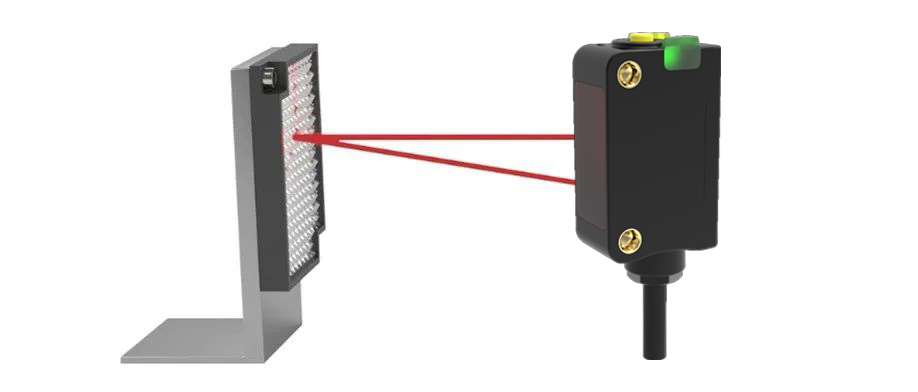In the ever-evolving tide of automation and intelligence, photoelectric sensors play a pivotal role. They act as the "eyes" of smart devices, perceiving changes in their surrounding environment. And as the power source for these "eyes," the light source output of photoelectric sensors is a core key to their performance. This article will delve into the technological allure of photoelectric sensor light source output and envision its boundless possibilities in the future of intelligent systems.
The working principle of photoelectric sensors relies on changes in the light signal produced after a light beam emitted by the light source interacts with the object being detected. High-quality light source output directly determines the following critical performance aspects of the sensor:
Detection Accuracy: A stable and high-brightness light source can provide clear signal reflection or blockage, thereby enhancing the sensor's ability to identify minute changes and achieve more precise detection.
Detection Distance: Sufficient light source intensity ensures that the light beam retains enough energy over a certain distance, thus extending the sensor's effective detection range.
Response Speed: Optimized light source driving circuits and the light source itself can achieve rapid switching and modulation, improving the sensor's response speed and meeting the detection requirements of high-speed moving objects.
Anti-interference Capability: A light source with a specific wavelength, combined with corresponding filters, can effectively suppress interference factors such as ambient light, enhancing the sensor's reliability in complex lighting environments.
Power Consumption: Efficient light source and drive design can reduce the sensor's overall power consumption while ensuring performance, thereby extending the sensor's lifespan.
Driven by technological progress, the variety of light sources for photoelectric sensors is constantly expanding to meet the demands of diverse application scenarios:
Visible Light Sources: These are the most common type, offering relatively low cost and suitability for general object detection and color recognition. LEDs of different colors can be optimized for specific applications.
Infrared Light Sources: With their strong penetration and anti-interference capabilities, infrared light sources are frequently used for distance detection, object presence detection, and applications in harsh environments.
Laser Light Sources: Characterized by high brightness, high collimation, and good monochromaticity, laser light sources are ideal for high-precision measurement, long-distance detection, and the identification of minute objects in high-end applications.
Blue Light Sources: Blue light is often employed for detecting dark blue objects, transparent objects, or in complex lighting environments.
Other Specialized Light Sources: To address specific application needs, various specialized wavelength light sources are also emerging, such as ultraviolet light for fluorescence detection.
High-quality light source output is the linchpin for photoelectric sensors to empower future intelligent applications:
Smart Manufacturing: In the realm of industrial automation, high-precision, high-speed photoelectric sensors enable the accurate detection and positioning of parts on production lines, boosting production efficiency and product quality.
Smart Logistics: Photoelectric sensors can be utilized for package sorting, goods tracking, and warehouse management, enhancing logistical efficiency and accuracy.
Smart Transportation: In areas like autonomous driving and traffic monitoring, photoelectric sensors can perceive vehicles, pedestrians, and other obstacles, providing crucial data for safe and efficient transportation systems.
Smart Homes: Photoelectric sensors find applications in human presence detection, light adjustment, and security monitoring, elevating the intelligence and comfort of smart homes.
Healthcare: Within medical devices, photoelectric sensors can be used for vital signs monitoring, medical imaging, and more, supporting disease diagnosis and treatment.
Illuminating a Smart Future
The light source output of photoelectric sensors is a cornerstone of their core technology. Continuous technological innovation is constantly enhancing their performance and reliability, while also expanding their applications across various intelligent domains. As the "eyes" of smart devices, photoelectric sensors with superior light source output will continue to play an irreplaceable role in the technological advancements of the future, illuminating a more intelligent, convenient, and efficient world.
PSE Series:
Detection Principles: Background Suppression, Through-beam, Polarized Retro-reflective, Diffuse Reflective, Limited Reflective, Transparent Object Detection, Time-of-Flight (TOF) Reflective
Light Sources: Red Spot Light Source, Red VCSEL Light Source, Red Line Light Source, Red Laser Light Source, Infrared Light, Infrared VCSEL, Blue Spot Light Source
Offers a wide detection distance range, and connection methods include cable and plug-in options, facilitating various application scenario requirements.
LANBAO Sensors offers a wide range of photoelectric sensor products featuring diverse light sources. If you're interested in the light sources used in photoelectric sensors, we warmly welcome you to explore our light source output technology and solutions further!
Post time: Apr-15-2025

